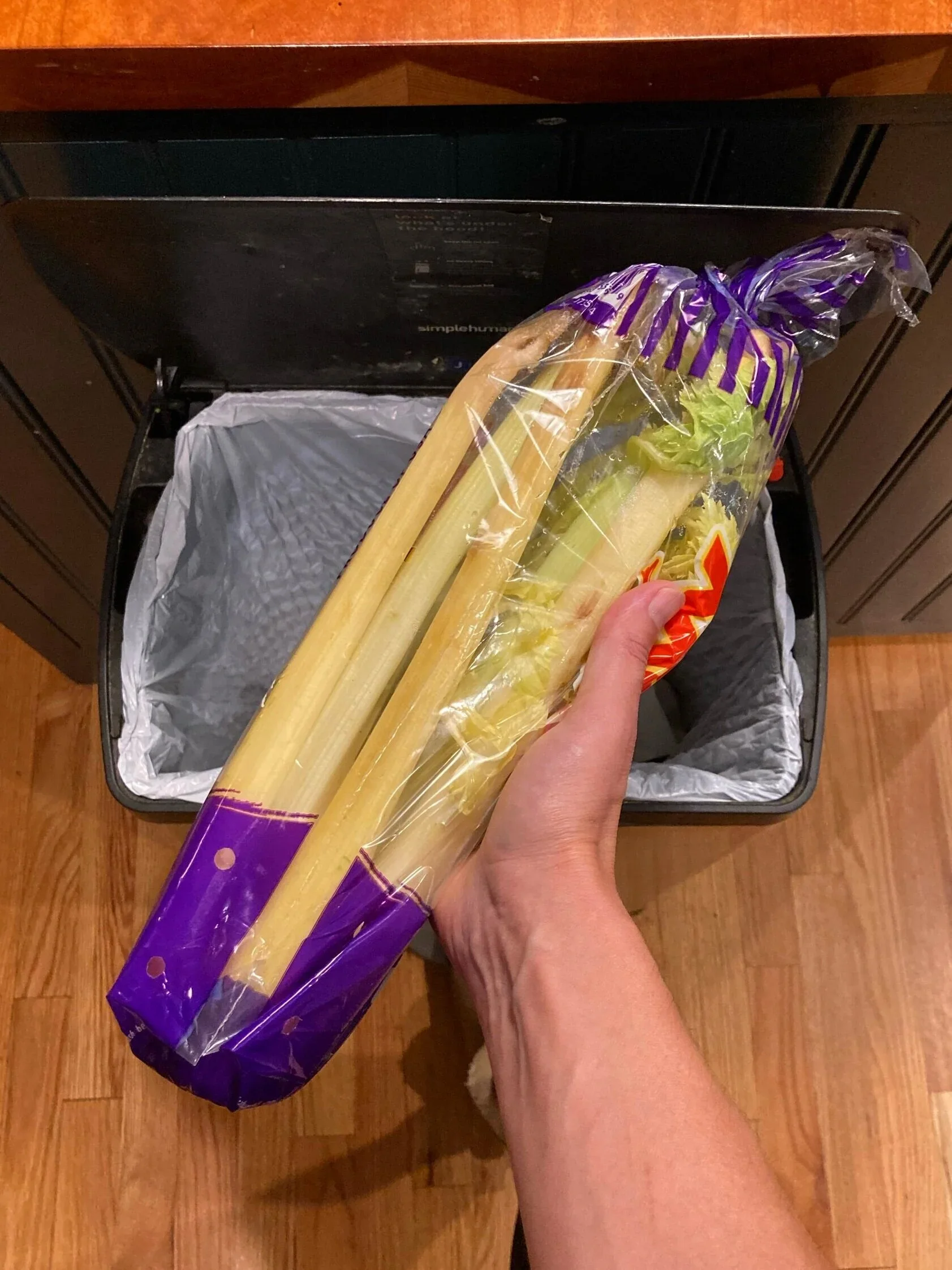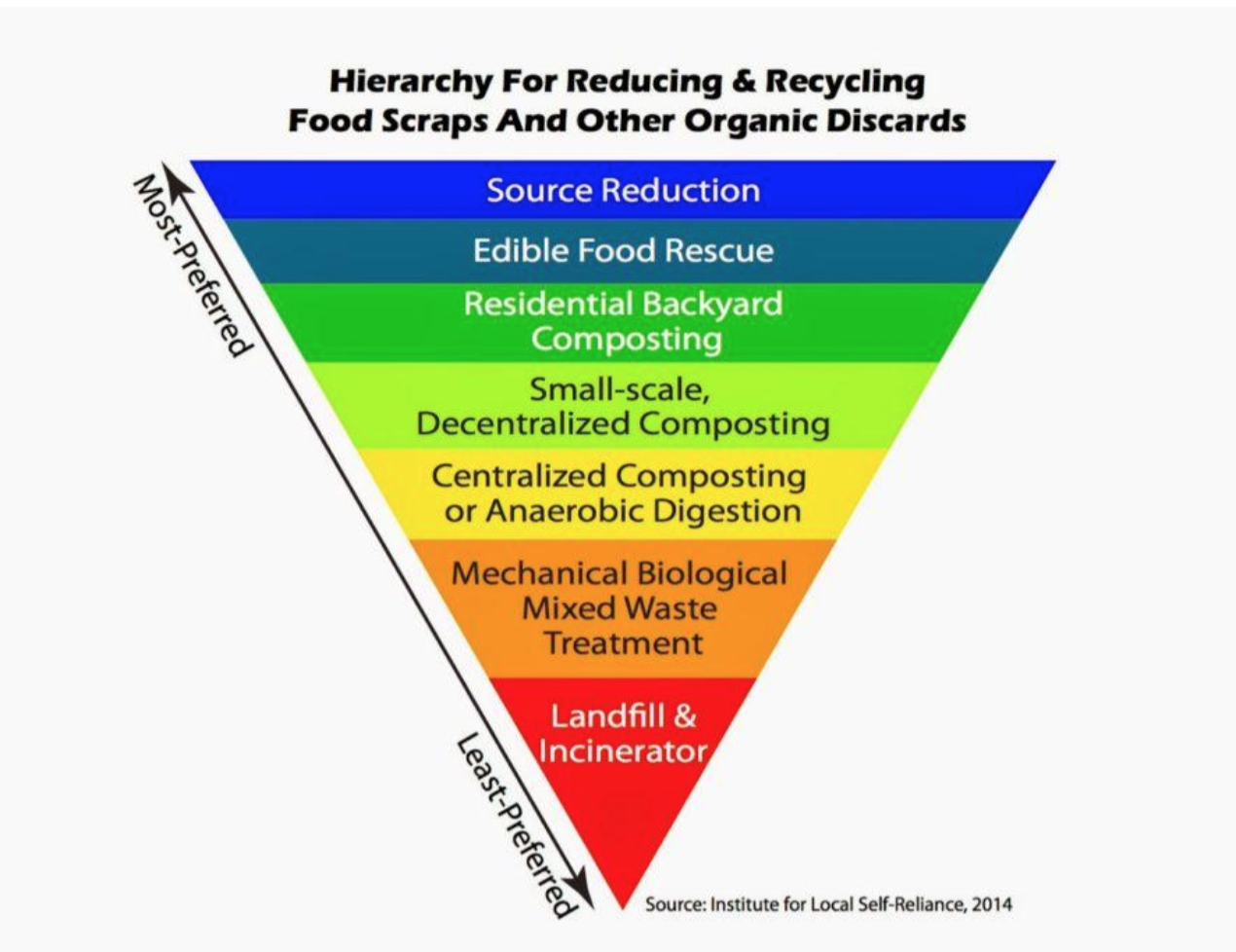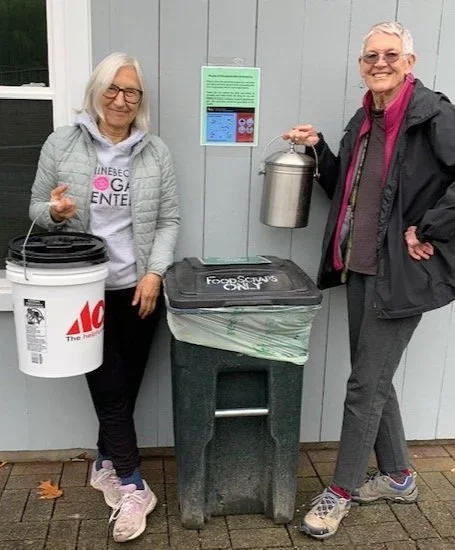
In Rhinebeck, we want to do a better job reducing the amount of waste we produce, as well as better protect against the harmful effects of these wastes on our water, soil, and air.
Waste & Recycling
Below you’ll find info on Rhinebeck’s waste and research about why organics management is important. Here in Rhinebeck Village, our Climate Smart Communities Task Force has a subcommittee focusing on food waste and composting.
“Nearly half of the solid waste produced globally is organic or biodegradable.”
— Drawdown: The Most Comprehensive Plan Ever Proposed to Revert Global Warming, edited by Paul Hawken
When we throw our food away, where exactly is “away”?
Rhinebeck Village discontinued its municipal garbage hauling quite a few years back when there were complaints about residents burning their trash. Most villagers now pay Welsh or Waste Management to haul their garbage away, or they use the Town Transfer Station.
Welsh: Approximately 50% of the garbage is hauled to a “burn plant” in Poughkeepsie where it is incinerated. The other 50% is hauled to landfills in Syracuse or Ontario.
Waste Management: Garbage is hauled to a site in Kingston, where it’s loaded onto trailers and brought to WM’s Green Ridge Landfill in Gansevoort, NY.
Rhinebeck Transfer Station: Garbage is hauled to the Poughkeepsie “burn plant” where it’s incinerated.
The unsafe run-off from landfills mixes with rainwater to produce a toxic stew called leachate which can poison our ground water and soil. Burning wastes can put those wastes into the air we breathe, as well as adding more greenhouse gases that pollute our air and contribute to climate change. Here’s research from the Dutchess County NRI on our air quality.
Look in your own garbage can: 25% of it is likely compostable! America wastes roughly 40% of its food (approximately 80 billion pounds), creating significant multiple environmental impacts and a growing humanitarian crisis.
According to the World Wildlife Fund, the production of wasted food in the US is equivalent to the greenhouse gas emissions of 37 million cars.
Explore this topic more at FoodPrint.org.Why is Food Waste a Problem?
This video, brought to you by 501c3 Kiss the Ground, is a great explainer!
According to the USDA, EPA, Natural Resources Defense Council and Drawdown, food waste:
Wastes Multiple Resources - Food waste squanders seeds, water, energy, land, fertilizer, hours of labor, and financial capital.
Generates Potent Greenhouse Gases - In landfills, without the presence of oxygen, decaying food scraps and other organics produce methane which is 26 times more potent than carbon dioxide as a greenhouse gas and is a significant contributor to global greenhouse gas emissions. The food we waste is responsible for roughly 8% of global emissions. (To learn more, explore this website.)
Causes Water Pollution - Food waste is among the leading causes of fresh water pollution.
Carelessly Expends Consumer Money - Costs us in the United States approximately $218 billion per year.
Has a Huge Humanitarian Cost -At a time when 12% of American households are food insecure, reducing food waste by just 15% could provide enough sustenance to feed more than 25 million people, annually. (To learn more, explore this website)
We all eat. But we don’t eat everything on our plate. And so much food never makes it to our plate in the first place—squandered and sent to the landfill.
“A third of the food raised or prepared does not make it from farm or factory to fork.”
— Drawdown
What You Can Do About It:
Ways of Reducing Food Waste
Solution #1: Diverting good, edible food to those in need:
Dirty Gaia, a local organization, seasonally partners with the food pantries at Rhinebeck Reformed Church and Church of the Messiah. Local growers are welcome to place excess veg from backyard gardens into donation coolers to be given out to the food insecure.
Rhinebeck CSC is seeking partnerships and volunteers to divert unused food to Rhinebeck’s food pantries and FeedHV, a local nonprofit that brings excess food to area shelters.
Ask local restaurants what they do with their food scraps and encourage them to work with the above organizations or start composting.
Solution #2: Changing our shopping and cooking habits
Do a fridge audit: understand what is rotting away in your refrigerator and plan to buy less of it
Learn recipes that reuse food scraps
Get a grip on expiration dates
Compost your remaining scraps or find a farmer who will feed them to their some pigs or chickens! Village residents can participate in our municipal composting program or use our Home Composting Guide.
This page and the related projects brought to you by the Compost Subcommittee, part of the Village of Rhinebeck’s Climate Smart Communities Task Force:
Mary Burns
Dorna Schroeter
Katherine Killeffer
Kerri Karvetski
Liz Roth
Aurore Stanek
Corinna Borden
Vanessa Bertozzi
Setting Rhinebeck CSC Task Force’s work into context:
NY State’s Food Donation & Food Scraps Recycling Law
According to the legislation, an estimated 2.8 million New Yorkers face hunger and food insecurity. New York’s new law passed on March 31, 2019, and goes into effect January 2022. It only regulates major food waste producers (defined as those who produce over 2 tons of food waste per week, for example a large grocery store). The law requires them to divert usable food and compost scraps if they’re within a 25 mile radius of a composting site. (More on this law from the DEC and this article.)
Better research and public understanding of the issue is leading to action to curb food waste and increase food recovery in several states across the country. In addition to New York, legislators in California, Connecticut, Massachusetts, Rhode Island, and Vermont have passed laws that restrict the amount of food waste going to landfills, with Vermont establishing a Universal Recycling Law that bans food scrap waste altogether by the end of 2020.
You will see more action in the direction of responsibly redesigning our food systems and habits. We hope to see more composting services and sites, municipal solutions, and the mainstreaming of home composting.
Biosolids: Where does our poo go?
Rhinebeck Village operates a Waste Water Treatment Plant, pictured here in an aerial shot.
The sludge from the Village of Rhinebeck’s Waste Water Treatment Plant is composted off-site.
After a summer 2021 field trip to Tri-Muni, a nearby wastewater plant that turns their sludge into compost, we met with the Village Highway and Wastewater Departments to learn about options for food scraps and biosolids composting from our RIT P2i partners.
The Waste Water Department went out to bid for a hauler to cart away our sludge where it can be composted, rather than incinerated.
The Rhinebeck Village Waste Water Treatment Plant produces 42 tons of sludge annually. We are excited to say that the sludge is composted at a facility in PA. Previously, our sludge was hauled 100 miles to Naugatuck CT, where it was then incinerated.




